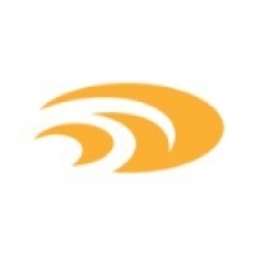技术
- 功能应用 - 企业资产管理系统 (EAM)
- 平台即服务 (PaaS) - 应用开发平台
适用行业
- 消费品
- 零售
适用功能
- 销售与市场营销
用例
- 资产健康管理 (AHM)
- 资产生命周期管理
服务
- 系统集成
关于客户
Splashlight 是一家视觉内容和技术提供商,近 15 年以来一直致力于创造高质量内容并改造生产系统。该公司开发世界一流的技术,并肩负着永不满足的使命,即在每一个环节提供创造性的智慧。在数据和时尚似乎相互矛盾的世界中,Splashlight 直观地理解利用技术帮助零售品牌超越其目标的重要性。该公司与管理大量商品的品牌合作,为他们提供工具来极其详细地跟踪其资产,并创建他们自己的个性化问责系统。
挑战
Splashlight 是一家视觉内容和技术提供商,面临着与客户透明合作以规划和改进其创意制作流程的挑战。该公司需要一个“中枢神经系统”,使所有相关方(包括商品团队、摄影师、后期制作团队和客户)在生产计划上保持一致。这对于支持更快地交付资产并允许实时调整营销策略是必要的。此外,Splashlight 希望提供一项服务,使管理大量商品的品牌不仅能够以令人难以置信的细节跟踪其资产,而且还能创建自己的个性化问责系统。
解决方案
Splashlight 采用了 DALIM ES,这是一个基于 Web 的集成平台,用于高效的资产生产和管理。这种独特的可定制解决方案为客户提供了高效的工作流程和对生产过程的清晰可见性。因此,客户能够更有效地规划和组织他们的创意资产,并生成更相关和更准确的摄影输出。 Splashlight 战略技术高级总监 Peter Gunther 表示,DALIM ES 提供的技术可以帮助品牌更好地跟踪他们的商品,更高效地交付结果,并通过规划、创建和路由资产来支持他们的利润。在正确的时间、正确的地点推动转化。 Splashlight 联合创始人伯努瓦·拉加德 (Benoit Lagarde) 进一步解释说,客户几乎可以定制流程的任何元素,使他们能够专注于自己最擅长的事情:创作出最好的作品并将产品快速推向市场。
运营影响

Case Study missing?
Start adding your own!
Register with your work email and create a new case study profile for your business.
相关案例.
.png)
Case Study
Improving Vending Machine Profitability with the Internet of Things (IoT)
The vending industry is undergoing a sea change, taking advantage of new technologies to go beyond just delivering snacks to creating a new retail location. Intelligent vending machines can be found in many public locations as well as company facilities, selling different types of goods and services, including even computer accessories, gold bars, tickets, and office supplies. With increasing sophistication, they may also provide time- and location-based data pertaining to sales, inventory, and customer preferences. But at the end of the day, vending machine operators know greater profitability is driven by higher sales and lower operating costs.

Case Study
Improving Production Line Efficiency with Ethernet Micro RTU Controller
Moxa was asked to provide a connectivity solution for one of the world's leading cosmetics companies. This multinational corporation, with retail presence in 130 countries, 23 global braches, and over 66,000 employees, sought to improve the efficiency of their production process by migrating from manual monitoring to an automatic productivity monitoring system. The production line was being monitored by ABB Real-TPI, a factory information system that offers data collection and analysis to improve plant efficiency. Due to software limitations, the customer needed an OPC server and a corresponding I/O solution to collect data from additional sensor devices for the Real-TPI system. The goal is to enable the factory information system to more thoroughly collect data from every corner of the production line. This will improve its ability to measure Overall Equipment Effectiveness (OEE) and translate into increased production efficiencies. System Requirements • Instant status updates while still consuming minimal bandwidth to relieve strain on limited factory networks • Interoperable with ABB Real-TPI • Small form factor appropriate for deployment where space is scarce • Remote software management and configuration to simplify operations

Case Study
How Sirqul’s IoT Platform is Crafting Carrefour’s New In-Store Experiences
Carrefour Taiwan’s goal is to be completely digital by end of 2018. Out-dated manual methods for analysis and assumptions limited Carrefour’s ability to change the customer experience and were void of real-time decision-making capabilities. Rather than relying solely on sales data, assumptions, and disparate systems, Carrefour Taiwan’s CEO led an initiative to find a connected IoT solution that could give the team the ability to make real-time changes and more informed decisions. Prior to implementing, Carrefour struggled to address their conversion rates and did not have the proper insights into the customer decision-making process nor how to make an immediate impact without losing customer confidence.

Case Study
Digital Retail Security Solutions
Sennco wanted to help its retail customers increase sales and profits by developing an innovative alarm system as opposed to conventional connected alarms that are permanently tethered to display products. These traditional security systems were cumbersome and intrusive to the customer shopping experience. Additionally, they provided no useful data or analytics.





